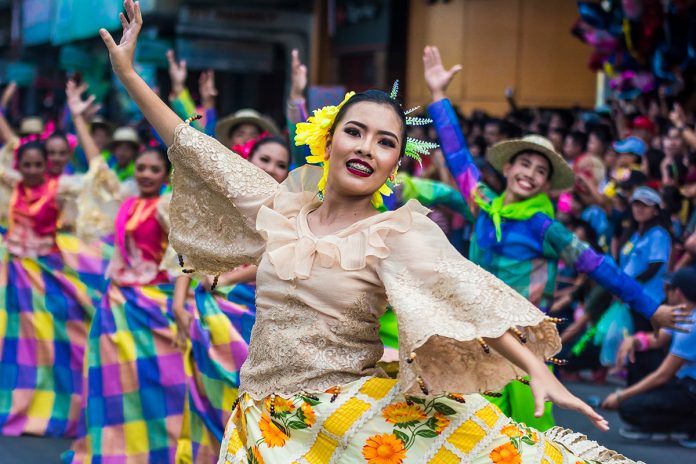The Gorechos hail from Barrio Matabao in Tubigon, Bohol, that celebrated its barrio fiesta on May 8. The first inhabitants of Tubigon settled along the shores of the river. The seasonal overflowing of the river floods the community, thus the place has been called “Tubigan,” or “a place of water” or “watery,” later “Tubigon” or “place abound in water.”
Tubigon has 34 barangays and 17 minor islands.
Bohol is supposed to sink a few meters in May, the fiesta month, because the population of the island multiplies up to four times when families come home.
Once the first of May strikes, people from abroad, Manila, and even nearby provinces begin flocking back to their small barrios in Bohol.
Date of fiestas in Bohol vary from town to town, yet most of the feast days fall on the month of May.
Barrio Matabao is not an exemption. Its fiesta falls on May 8 to honor Saint Joseph. Tubigon’s is on May 15.
One of the highlights of the Matabao fiesta is the “Karakol,” a dance procession that is rich with religiousity.
It is part of a panata (vow) that is usually carried out as an appeal to God for continued provision of daily needs or as thanksgiving for healing, blessing, or granted wish.
Filipino Catholics are known for their sincere, enormous, and extreme expressions of piety, considering that the country is the third-largest Catholic population in the world.
Essentially, fusions of Catholic and secular beliefs and practices, fiestas are prime manifestations of the Filipino’s fervent devotion and faith that is characterized by history, artistry, creativity, and passion.
Filipinos are “visual” religious, people who like to tell stories by acting them out in the form of mass gatherings like processions.
The more popular religious street dancing events include the Sinulog, the Dinagyang, the Ati-Atihan, and the Dinagsa.
The word Sinulog comes from the Cebuano word “sulog,” roughly “water current.” The dance consists of two steps forward and one step backward, done to the sound of drums.
In Ati-Atihan, the street parade is known as “Sadsad,” a form of dancing wherein the foot is momentarily dragged along the ground to the beat of marching bands. Participants paint their faces with soot.
In Dinagyang, the Ati tribe consists of a number of “warrior” dancers chanting and dancing to the sound of drums and percussions.
As “prayer through dancing” or “pasayaw na pananalangin,” the Karakol is a slow procession, like a snail, thus the word “caracol,” which means snail.
It is likened to the resilience of the snail that sheds its shell to reveal a different and much livelier side.
The karakol starts with a parade of performers (devotees and locals) to the center of the barangay to show their devotion to the patron saint.
Characterized by an abundance of food and merriment, not a single day will pass without a fiesta in Bohol.
Old folks seem to have mastered the art of putting out most of their earnings for the year. Filipinos take their festivals and fiestas seriously as part of our culture. Fiesta means “feast,” from the Latin word “festus,” meaning ”festive, joyful, or merry.”
The roots of Philippine fiestas go back even before the Spanish colonial rule.
The natives had their own set of cultures and traditions, including the worship of gods, or “anitos,” through various ritual offerings.
When Spanish missionaries came to the Philippines in the 1500s, they discovered that the fiesta was a helpful tool to help teach Filipinos the Catholic faith and its saints, because the people had already a sense of patronage of a deity.
Each fiesta or festival has a unique theme, which defines its flavor through a set of activities, such as religious processions, live brass bands, street dancing or parade of dancers in colorful costumes and props, Masses, sports fests, beauty pageants, cultural shows, and performances.
A wonderful fiesta season means good luck for the rest of the year.
Atty. Dennis R. Gorecho heads the seafarers’ division of the Sapalo Velez Bundang Bulilan law offices. For comments, e-mail [email protected], or call 09175025808 or 09088665786









